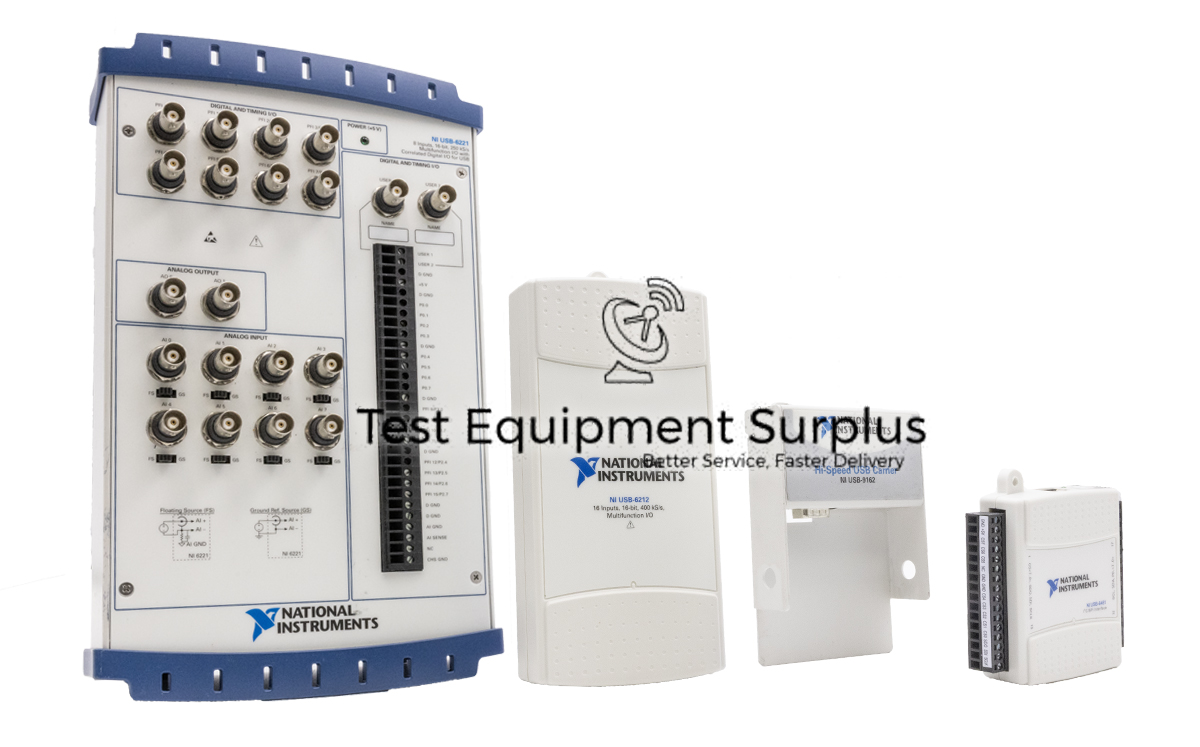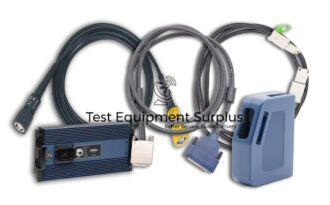Description
The National Instruments USB-6255 Multifunction I/O Device is a versatile data acquisition tool with part numbers including 779959-01, 779958-01, 779958-04, and 779959-04, providing a high resolution of 16-bit for precise measurements.
Equipped with a minimum of 24 digital I/O lines and seven programmable input ranges, this device is designed to cater to a wide array of applications, requiring recalibration at an interval of every two years to maintain accuracy.
It offers an extensive range of analog input channels, with 40 differential or 80 single-ended options, and an aggregate multichannel sampling rate of 750 kS/s, while the single-channel sampling rate can reach up to 1.25 MS/s.
The USB-6255 boasts an input impedance of 820Ω and includes sophisticated analog triggers, such as the Start Trigger, Reference Trigger, and Pause Trigger, which can operate in either analog edge triggering or analog window triggering modes.
| Specification | Details |
|---|---|
| Manufacturer | National Instruments |
| Product Line | USB-6255 Multifunction I/O Device |
| Part Numbers | 779959-01, 779958-01, 779958-04, 779959-04 |
| Resolution | 16-bit |
| Digital I/O Lines | Minimum of 24 |
| Programmable Input Ranges | Seven |
| Calibration Interval | Two years |
| Analog Input Channels | 40 differential or 80 single-ended |
| Aggregate Multichannel Sampling Rate | 750 kS/s |
| Single-Channel Sampling Rate | 1.25 MS/s |
| Input Impedance | 820Ω |
| Analog Triggers | Start Trigger, Reference Trigger, Pause Trigger |
| Triggering Modes | Analog edge triggering, Analog Window Triggering |
Question 1: What is the difference between the analog edge triggering and analog window triggering modes in the National Instruments USB-6255 Multifunction I/O Device’s sophisticated analog triggers?
Answer 1: The National Instruments USB-6255 Multifunction I/O Device requires recalibration every two years to maintain its accuracy.
Question 2: What is the recommended recalibration interval for the National Instruments USB-6255 Multifunction I/O Device to ensure maintained accuracy?
Answer 2: The sampling rate of a single channel on the National Instruments USB-6255 Multifunction I/O Device can reach up to 1.25 MS/s, and it requires recalibration every two years to maintain accuracy.
Question 3: What are the full capabilities and technical specifications of the National Instruments USB-6255 Multifunction I/O Device, including its analog input options, digital I/O lines, programmable input ranges, and triggering modes?
Answer 3: The National Instruments USB-6255 Multifunction I/O Device features a 16-bit resolution, 24 digital I/O lines, seven programmable input ranges, 40 differential or 80 single-ended analog input channels, a maximum aggregate multichannel sampling rate of 750 kS/s, a single-channel sampling rate of up to 1.25 MS/s, an input impedance of 820Ω, and includes advanced analog triggers with options for analog edge or window triggering modes, thus
Question 4: What is the sampling rate of a single channel on the National Instruments USB-6255 Multifunction I/O Device, and how often does it require recalibration for maintaining accuracy?
Answer 4: The difference between analog edge triggering and analog window triggering modes in the National Instruments USB-6255 Multifunction I/O Device’s sophisticated analog triggers is that analog edge triggering initiates the acquisition or output process when a signal crosses a specified voltage threshold, either rising or falling, while analog window triggering starts the process when the signal enters or leaves a specified voltage range, effectively creating a ‘window’ where the trigger condition is met.
Question 5: How often does the National Instruments USB-6255 Multifunction I/O Device require recalibration to maintain its accuracy?
Answer 5: The recommended recalibration interval for the National Instruments USB-6255 Multifunction I/O Device to ensure maintained accuracy is every two years.




